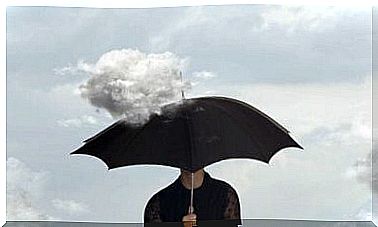Henko, A Profound Change Without Return

Henko is a Japanese word that refers to a change where there is no possibility of going back to how we once were. In many cases it represents progress in our personal growth. Henko is a profound change without return.
It is proof that we must be able to bet on ourselves and on our abilities. Henko is that turning point that elevates us and lifts us over our fears and worries. It changes our inner attitudes.
Having the ability to change, develop, progress and expand our level of consciousness is the key to overcoming obstacles. So we should be able to do this. In this way, we will end our self-doubt and become stronger. Henko is the fruit of our resilience.
Change to get ahead
We can solve many of our difficulties if we use henko , a profound change, in our lives . The problem, however, is that we are usually not willing to do this. Maybe we’re not sure how to make a change. It can also seem scary because it’s new.
For example, we know that some people prefer to stay in their comfort zone. They keep using the same strategies to deal with things all the time, even though they feel terrible. Actually, they have to make a real effort. A major change will otherwise not occur naturally.
The truth is that the unknown makes us all uncomfortable. After all, the things that we cannot predict and that escape our calculations are completely out of our control. When we mishandle this discomfort, we eventually become emotionally exhausted.
We then choose to keep the leg stiff instead of nurturing the necessary change. In this sense, there can be many reasons for a transformation. However, these three elements must exist for a change to occur: belief, desire, and motivation.

take a risk
The risk of change is embedded in who we are. It’s part of us. So we must take advantage of that inner feeling and use it to move forward. We must be fearless and ready for the moment when our feet no longer touch the ground.
Now we want to be clear about this. Not every change or experience will change us. Sometimes we go through a first-order change. When this happens, we “make a change” but end up stuck in the same rut or acting as usual.
So in order to grow and follow a new path, we must introduce a higher level of change. Paul Watzlawick calls this a second-order change. What does this actually mean?
Types of Changes According to Paul Watzlawick
The experts in systems theories assume that there are two opposing tendencies in the field of change. The first has to do with keeping us in a stable, still state. The second tendency is about creating new forms. Both tendencies are derived from a mathematical theory about logical types.
The Austrian psychologist Paul Watzlawick called these tendencies change 1 or first order, and change 2 or second order. To explain the two changes, he used the following example.
A person who has a nightmare can do many things within the nightmare: run, hide, scream and so on. However, no change in these behaviors can end the nightmare.
He called this type of change a type 1 change. The reason is that the nightmare involves changes and strategies that deal with the same dynamics the person is in. They are based on negative feedback.
Instead, he gave the name type 2 change to something that occurs in a qualitative way and relies on positive feedback. It thus allows the deviations to multiply and gives way to the formation of a new structure.
Applying this to the previous example, waking up is the type 2 change. The only way out of the nightmare is a change in the dream, in reality or in perspective.
Making Type 2 Changes
In psychology and treatment we can find another example. Some parents ask for psychological help when their child’s school performance drops.
Obviously, the parents have already taken some form of action. They may have punished the child, curtailed extracurricular activities, or prevented the child from going out with friends.
These are type 1 changes. The problem is they can’t fix the situation. The therapist now makes an analysis and interviews the different family members. He finds out that the child’s grandmother and older sister have come to live with them.
This has changed the dynamics of relationships between all family members. What could be the type 2 change in this case? The change should change the way the family members interact with each other and how they adapt to the new situation.
Perhaps we can better understand this concept if we consider a person who has started to feel sad, apathetic and unmotivated. In an effort to improve their mood, they decide to join a sports club, go out more and experiment with creative projects. These are all type 1 changes.
The problem is, despite all these efforts, they still don’t feel well. They are more likely to be distracted. What can they do then? They can enter a type 2 change, which is actually also a henko or a major change.
It means changing their perspective, changing their view of reality and directing their emotions. This will ensure that they are really capable of making a major change.
Henko: a radical change, a new destination
So we see that change is a multi-dimensional phenomenon. This is especially true if we want to go beyond the current situation and provoke a henko or a radical change. It is not enough that we just want to change and start doing something new.
If we really want to start seeing the world in a new way, we have to dissect our perspective. We also need to analyze how it affects our daily lives.
We may think that our view of reality is perfectly okay and that the world should behave according to our ideas. However, how can we be sure of this? After all, it is true that two people can perceive the same event in completely different ways.
The truth is that each of us builds and works with our own individual and difficult to interchange reality. Therefore, we better explore other visions and perceptions to solve our problems.
Questioning our reality
It is true that this is not easy. Questioning our world is also not something we can do in a short time. We will not actually be satisfied until we are in harmony with our true nature, our nature free of cares. We will only be able to achieve well-being if we leave our ego behind.

A radical change, a henko, is an exercise in courage in which we confront ourselves and our comfort zone. We need to tear down the walls we’ve been building for years. We need to dismantle the ideas that habitually made our lives easier.
In this sense, we are our most complicated adversaries. However, we are also the ones with all the knowledge. This means that we can give ourselves the opportunity to make ourselves stronger. The condition is that we don’t get carried away by mental games.
Change is constantly present in our universe. However, it is the awareness of that change that helps us develop. It is important that we illuminate the pathways that help us grow. What we have learned along the way, we must use to become enlightened.









